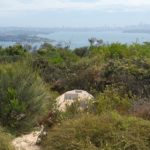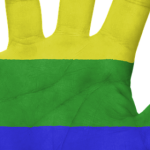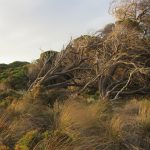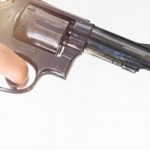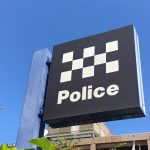Scott Johnson’s Death Finally Determined a Gay Hate Crime
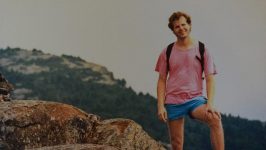
The third coronial inquiry into the death of Scott Johnson reported last Thursday that the 27-year-old US mathematician died as a result of a gay hate crime in December 1988. The conclusion has put to rest years of speculation that the earlier finding of suicide was incorrect.
From the late 1970s and into the early 2000s, there was an epidemic of gay hate bashings and murders across Sydney involving groups who tracked down and set upon men at gay beats – which are places men meet for casual sex.
Research by former NSW police gay and lesbian liaison officer Sue Thompson identified 46 gay hate murders in NSW between 1989 and 1999. Thompson’s findings were corroborated by the research of criminologist Stephen Tomsen, who identified 50 such murders between 1985 and 1995.
The research influenced NSW police to reopen investigations last year into 88 deaths, in an effort to determine whether they were related to anti-gay hatred. Operation Parrabell, which does not include the investigation into Mr Johnson’s death, is yet to report on its findings.
A well-known beat
On 10 December 1988, Scott Johnson’s body was found at the base of a cliff by two fishermen near Blue Fish Point, south of Manly. His body was naked, and his clothes were found neatly folded on the North Head clifftop above, without his wallet.
NSW police were quick to deem the death a suicide. During the initial inquest, former detective Doreen Cruickshank told the court that the area wasn’t a gay beat, as police hadn’t received any pattern of reports to consider it one. And the inquiry found Mr Johnson had taken his own life.
However, evidence given at the current coronial inquiry pointed out that within the local community the location was well-known as a gay beat, as well as being an area where violent incidents occurred.
An unnamed witness told the inquiry in June that it was common knowledge at the time that the North Head clifftop was an area where men met for casual sex. He recalled that soldiers from the Army School of Artillery at North Head bragged about bashing gay men at the location.
The witness regularly socialised with groups of soldiers at the Hotel Steyne in Manly. And he remembers soldiers turning up at the bar mentioning that they’d just “gone bashing queers.”
The second inquest and investigation
A former user of the North Head beat, Gordon Sharp, related to the inquest that bashings were a regular occurrence at the location and men who were subjected to them were reluctant to report it to police, for fear of receiving a second beating from officers.
Mr Sharp told the court that a young man would lure an unsuspecting victim into bushes, where four or five of his mates would be waiting to set upon him. He also recalled that his friend Bryan Tompson had been stabbed at the beat in 1986, and reported it to police.
But, in a report to the state coroner detective chief inspector Pamela Young said the assault was the only reported act of violence at the North Head location, and given the lack of any other reports of anti-gay crimes, it was reasonable to conclude that gay bashers weren’t active in the area.
Detective Young, of the NSW police unsolved homicide unit, led a two year investigation into Johnson’s death following a second coronial inquest in 2012, which overturned the finding of suicide. The recent police investigation reported it found no evidence of murder.
A gang of skinheads
Another unidentified witness gave evidence at the inquiry that related to a gang known as the Narrabeen Skinheads, who had boasted about bashing a gay American man “at Manly or North Head near a beach” in mid-December 1988.
The gang were known for taking a bus into Surry Hills on a Friday night to attend a toilet block, where they would locate gay men to bash. The witness stated that a member of the group also said they would attend a gay beach in Manly looking for men to assault.
The witness presented information to the court that included members of the group saying they’d attacked an American man they found lying naked and masturbating.
The naked suicide
Professor Matthew Large stated in a report presented to the coronial inquiry that of the thousands of suicide attempters he’d investigated throughout his career, he had never come across a “naked jumper.”
While forensic pathologist Dr Johan Duflou, who carried out the autopsy on Mr Johnson, stated that he had heard of one other case of a naked person being found at the bottom of the cliff. However, he explained that “such an occurrence is exceptionally rare.”
The findings of the state coroner
Last Thursday, NSW coroner Michael Barnes concluded in the coronial report “that homicide is more likely than either of the other two scenarios – accident or suicide.”
Mr Barnes stated it was likely “two or more people came upon Mr Johnson while he was naked and engaged in such violent conduct towards him that he was either pushed over the cliff or fell while trying to escape.”
Despite the inadequacy of the initial police investigation and the lack of reliable witnesses, Mr Barnes said he was “persuaded to the requisite standard that Scott died as the result of a gay hate attack.” However, there’s insufficient evidence to establish the perpetrators.
29 years on
The third inquest into the death of Scott Johnson began in December last year. It’s only the second time in Australian history that a third inquest has been ordered into the death of a single person. The first was into the case of Azaria Chamberlain.
Steve Johnson, Scott’s older brother, has been self-funding an investigation and campaign that led the third coronial inquiry. He hired US private investigator and journalist Daniel Glick to look into his brother’s death.
The deceased’s former partner of five years, Michael Noone, first suggested the death was a result of a gay hate crime in 2005, following news of coronial findings into gay murders on the Bondi-Tamarama cliffs in the late 1980s.
The NSW coroner declined to make a recommendation for further investigation into Mr Johnson’s death, while NSW police said in a statement that the case remains open, and any new information would be thoroughly investigated.



